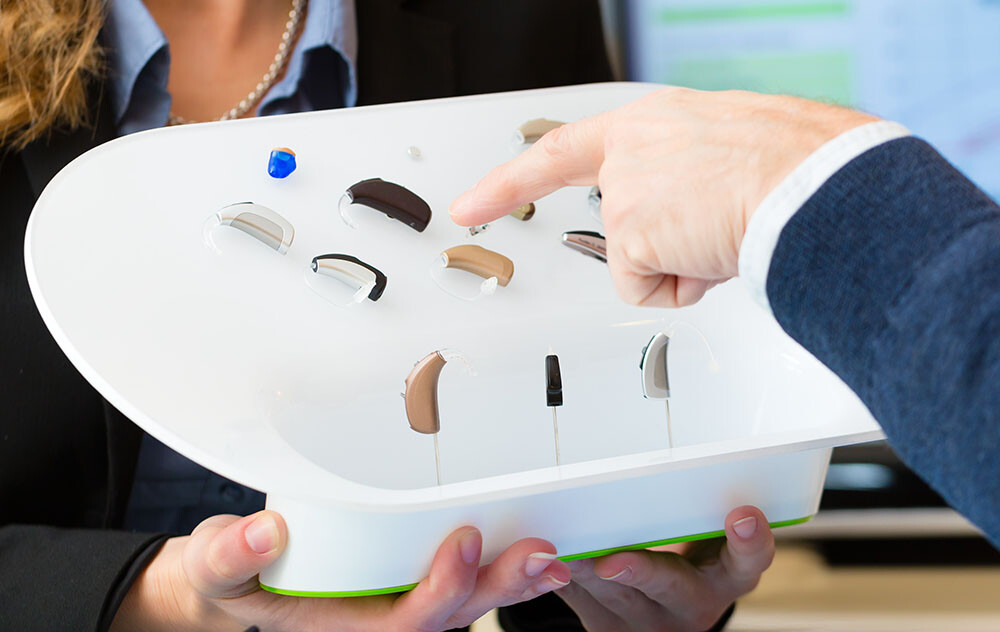Suffering with hearing loss is never much fun, but finding the best hearing aids for your individual requirements will make a huge difference. They have the ability to help your ears detect sounds across a far wider range of frequencies and volumes, which will improve your daily life to significant levels. Once again, though, only the best will do.
Here at San Francisco Hearing Center, we take great pride in helping hearing aid users find the perfect devices. Whether you’re a first-time wearer or desire an upgrade, here’s all you need to know.
Why does the choice of hearing aid matter?
As a first-time hearing aids user, you may think that all devices are pretty much the same. In truth, those feelings could not be further from the truth. The reality is that the type of hearing aid you choose will have a massive impact on your daily activities.
Some are better suited to mild hearing loss while others are better for moderate hearing loss. Meanwhile, some devices link up with ALDs and other products with far greater ease. Finally, you need to consider the comfort. After all, you will be wearing them for several hours at a time.
What is the best type of hearing aid on the market?
Everybody has their unique hearing profile and individual lifestyles. Therefore, the device that works best for a friend or relative might not work best for you. There are many options to consider, here are some of the best.
Behind-the-ear (BTE) hearing aids
BTE hearing devices are the type that most people picture when discussing potential devices. The casing, which is colored to match the skin tone, sits behind the ear while a rubber tube connects the speaker to a mold or soft tip that sits in the ear.
They are comfortable and very easy to use, not least because the power and volume buttons are easy to locate and manipulate. Behind-the-ear hearing aids are often among the most affordable options too, which is another major selling point.
In-the-ear (ITE) hearing aids
ITE hearing aids are custom made to the individual’s needs and the entire device sits in the bowl of the ear. They are available in shades that can blend with hair or skin tones to offer a more natural look and can be equipped with numerous features due to their size.
In-the-canal (ITC) hearing aids
In-the-canal hearing aids fit discretely in your ear canal and offer the privacy many are looking for when selecting a device. They offer natural listening experiences because of their placement in the ear and feedback reduction.
RIC or RITE hearing aids
Receiver-in-canal and receiver-in-the-ear devices are basically the same things. The terms describe a range of devices that are very similar to the BTE devices. The main difference is that the speaker sits in the ear rather than behind it.
The speaker is connected to the case via a thin wire. They offer a comfortable fit but are a little less inconspicuous than some of the alternative options out there.
Bluetooth hearing aids
Technology evolves at a rapid rate and this is especially true in the hearing aids market. Devices that are equipped with Bluetooth facilities often link up with ALDs far easier. If you believe that those features will be useful, this can be the way to go.
The audiologist will give you the full overview of the features and whether the added facilities are needed in your personal circumstances. When they are right for you, these options offer fantastic value for money for a long time to come.
What else should I consider?
In addition to choosing the right type of hearing aid device, it’s vital that you pick the right model. You deserve a hearing aid that you can rely on and ASOSF works with four of the most reputable manufacturers on the market:
- Lyric invisible hearing aids
- Oticon miniRITE hearing aids,
- Phonak hearing aids,
- Widex Beyond hearing aids.
All of the above manufacturers produce a range of models while our audiologists can help with the specifications, fittings, and calibrations. Whichever option is deemed right for you, San Francisco Hearing Center will ensure you receive the very best setup for your needs.


